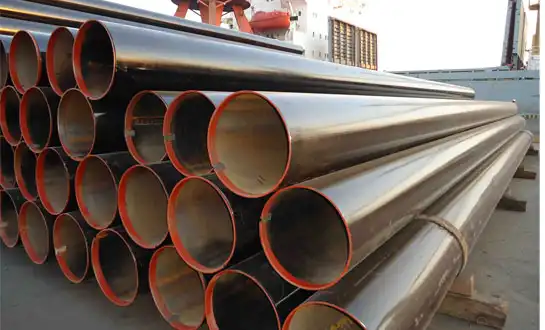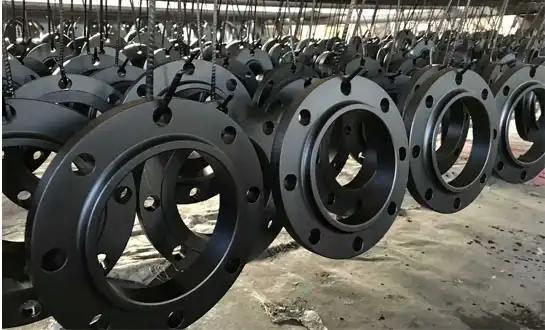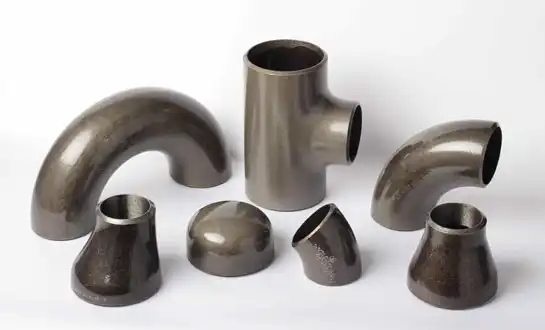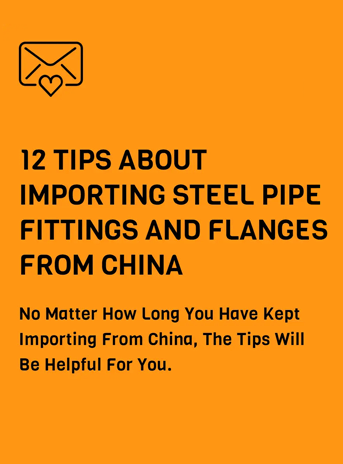Why Quality Assurance Is Crucial in Pipe Fittings Procurement?
Making sure you buy high-quality pipe fittings is an important part of making sure that any plumbing system in a home, business, or industry works well and lasts a long time. When procuring steel pipe fittings, the difference between superior quality components and substandard alternatives can mean the distinction between decades of reliable service and catastrophic system failures. Tough quality control steps keep the system free of mistakes in the materials, differences in size, and performance issues that might make it less pure. In today's competitive marketplace, where steel pipe fittings serve as the backbone of critical infrastructure ranging from petrochemical facilities to municipal water networks, establishing comprehensive quality verification processes is not merely advisable—it is essential for operational safety, cost efficiency, and regulatory compliance.
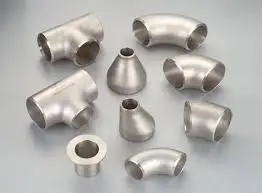
The Financial Impact of Quality Standards in Pipe Fitting Selection
Understanding Long-Term Cost Implications of Quality Investment
The procurement decision for steel pipe fittings extends far beyond initial purchase price considerations, encompassing a comprehensive financial landscape that includes installation expenses, maintenance requirements, and potential replacement costs over the system's operational lifespan. Organizations that prioritize quality assurance during procurement typically experience substantially lower total cost of ownership compared to those selecting components based solely on competitive pricing. Premium steel pipe fittings made under strict quality standards are better at resisting corrosion, mechanical stress, and heat cycling. This means that it will need less upkeep and service less often. The financial burden associated with premature fitting failures—including emergency repairs, production downtime, environmental remediation, and potential liability claims—often exceeds the initial cost differential between quality-assured and economy-grade products by orders of magnitude. Furthermore, quality-certified steel pipe fittings maintain their dimensional stability and sealing properties throughout their service life, preventing the gradual efficiency losses that accumulate when inferior components begin degrading.
Risk Mitigation Through Certified Manufacturing Processes
Quality assurance certifications such as ISO 9001:2015 provide procurement teams with verifiable evidence that steel pipe fittings have been manufactured under controlled conditions with consistent material properties and dimensional accuracy. Since these systems require makers to set up full tracking systems, they have to. This way, if there are any quality issues, they can be found quickly and solved before they spread through the supply chain. When fitting failures potentially put people at risk, the environment at risk, or mission-critical activities at risk, the risk mitigation benefit becomes even more clear. Companies that work in regulated fields might face big fines for not following the rules, so buying certified steel pipe fittings is a smart way to limit risk. Beyond regulatory considerations, quality-assured components reduce the likelihood of warranty disputes, supplier relationship complications, and project schedule disruptions that frequently accompany the discovery of defective materials during installation or commissioning phases.
Competitive Advantages Gained Through Quality Procurement
Companies that establish reputations for uncompromising quality standards in their infrastructure investments often gain significant competitive advantages within their respective markets. The operational reliability enabled by premium steel pipe fittings translates into higher production uptime, more predictable maintenance scheduling, and enhanced ability to meet delivery commitments to customers. These operational efficiencies compound over time, creating performance differentials that competitors struggling with recurring equipment failures cannot easily overcome. People believe a business more when it gets things with quality in mind. Customers, investors, and government leaders are all in this group. For this to work, people might have to work together on projects that need a clear commitment to quality. The documentation trail associated with quality-assured steel pipe fittings procurement also strengthens insurance negotiations, as underwriters recognize the reduced risk profiles associated with properly specified and verified components.
Safety and Compliance Requirements in Industrial Piping Systems
Material Integrity and Pressure Rating Verification
The safety performance of any piping system depends fundamentally on the material integrity and pressure rating accuracy of its steel pipe fittings, making quality assurance protocols essential for protecting personnel and assets from catastrophic failures. Quality verification processes must confirm that fittings meet or exceed specified pressure ratings under both steady-state and transient conditions, accounting for factors such as pressure surges, thermal expansion, and cyclic loading that occur during normal operations. Metallurgical testing, which includes checking the chemical composition and mechanical properties of steel pipe fittings, makes that they have the strength, ductility, and toughness needed for their intended use. Non-destructive examination techniques such as ultrasonic testing, radiographic inspection, and magnetic particle examination detect internal flaws, surface cracks, and material discontinuities that could serve as failure initiation points under operational stresses. Using steel pipe fittings with untested material qualities may lead to anything from little leaks to explosive breaks that let dangerous liquids or gasses into populated areas.
Regulatory Compliance and International Standards Adherence
Industrial piping systems must conform to numerous regulatory frameworks and technical standards that vary by geographic region, industry sector, and application type, making comprehensive quality assurance indispensable for legal compliance. Standards such as ASME B16.9, ASTM specifications, and regional requirements like GOST-R establish minimum acceptability criteria for dimensions, materials, testing protocols, and documentation that steel pipe fittings must satisfy. To make sure the rules were followed, quality assurance systems use organized ways to test, check, and keep records that show this. Export-oriented projects face additional complexity, as components must simultaneously satisfy requirements in both manufacturing and destination countries, necessitating certifications from recognized bodies such as SGS and adherence to international harmonization standards. Failure to maintain compliant steel pipe fittings procurement practices exposes organizations to enforcement actions, project shutdowns, contractual penalties, and potential criminal liability in cases involving negligence or willful disregard for safety regulations.
Traceability Systems and Documentation Requirements
Comprehensive traceability systems form the backbone of effective quality assurance in steel pipe fittings procurement, enabling rapid identification of material sources, manufacturing conditions, and testing results for every component installed in critical systems. Modern traceability protocols assign unique identifiers to individual fittings or production lots, linking them to mill test reports, dimensional inspection data, non-destructive examination results, and coating verification records throughout their journey from manufacturer to installation site. During incident investigations, quality audits, or warranty claims, this documentation architecture is very useful since it gives clear proof of component specifications and conformity status. Regulatory authorities are requiring steel pipe fittings used in safety-critical applications to have strong traceability more and more. This is because quickly finding affected parts after finding manufacturing defects can stop widespread failures and make targeted remediation efforts easier.
Technical Specifications and Performance Validation Methods
Dimensional Accuracy and Compatibility Assurance
The functional success of piping assemblies depends critically on the dimensional accuracy of steel pipe fittings, as even minor deviations from specified geometries can compromise joint integrity, create installation difficulties, or induce stress concentrations that accelerate failure mechanisms. Quality assurance protocols must verify that critical dimensions—including end preparations, wall thicknesses, bend radii, and branch angles—fall within acceptable tolerance ranges established by applicable technical standards. Compatibility between mating components requires consistent adherence to standardized dimension systems, ensuring that fittings from different production batches or suppliers can be interchanged without geometric interference or excessive gap conditions. High-throughput dimensional verification is possible with advanced coordinate measuring systems and automated inspection equipment. With these tools, you can measure more accurately than when you do it by hand. The economic implications of dimensional non-conformance in steel pipe fittings extend beyond direct component costs to encompass field modification expenses, schedule delays, and potential rework of adjacent piping sections when incompatible fittings are discovered during installation activities.
Material Testing and Performance Validation Protocols
Comprehensive material testing programs verify that steel pipe fittings possess the chemical composition, mechanical properties, and microstructural characteristics required for reliable performance under specified operating conditions. Tensile testing confirms that base materials meet minimum strength and elongation requirements, while impact testing at relevant temperatures ensures adequate toughness to resist brittle fracture in cold service or rapid depressurization scenarios. Hardness testing quickly tells you how well a material is working and may find problems with heat treatment or material replacements that make it less useful. Chemical analysis checks that the compositions of alloys are within certain limits. This means they are resistant to rust and can be welded together to make fixed assemblies with steel pipe fittings. Metallographic analysis shows the grain structure, inclusion content, and phase distributions that affect how long a material lasts and how well it resists degradation processes like hydrogen embrittlement or stress corrosion cracking.
Surface Condition and Coating Integrity Verification
The surface condition of steel pipe fittings has a big effect on how well they resist corrosion, how long they last before they break, and how well they can make leak-proof couplings with other parts. This is why checking the quality of the surface is such an important part of quality assurance programs. Visual examination finds obvious flaws like cracks, laps, seams, or too much roughness on the surface that might affect performance or point to faults with the way the item was made. Coating systems applied to steel pipe fittings require verification of thickness uniformity, adhesion strength, and freedom from defects such as holidays, pinholes, or contamination that would allow corrosive media to reach base metal surfaces. Surface preparation quality before coating application critically determines coating performance, necessitating verification that surfaces meet specified cleanliness and profile requirements through techniques such as salt contamination testing and surface roughness measurement.
Conclusion
Making sure that the pipe parts that are bought are of good quality is what keeps industrial infrastructure safe, reliable, and cheap. We have spoken about how thorough quality checks safeguard investments, make sure that rules are followed, and stop disasters from happening. Professional procurement techniques are different from those that put short-term cost reductions ahead of long-term performance because they use approved production processes, strict testing standards, and strong traceability systems. HEBEI RAYOUNG PIPELINE TECHNOLOGY CO., LTD. exemplifies this commitment to excellence through our ISO 9001:2015 certification, GOST-R and SGS compliance, and comprehensive product range serving global markets with unwavering quality standards.
FAQ
1. What certifications should I look for when procuring steel pipe fittings?
Essential certifications include ISO 9001:2015 for quality management systems, material certifications such as ASTM or ASME specifications, and regional compliance documentation like GOST-R or SGS for international trade. The following badges show that the companies that make things follow the same rules for testing, keeping track of materials, and making things. Also, certain specialized jobs in the petrochemical, pharmaceutical, or food processing industries may need industry-specific qualifications.
2. How does quality assurance impact the total cost of ownership for piping systems?
Quality-assured steel pipe fittings deliver significantly lower total ownership costs through extended service life, reduced maintenance requirements, and prevention of costly failure incidents. While initial procurement costs may exceed economy alternatives, the elimination of premature replacements, emergency repairs, and production downtime generates substantial savings. Quality parts help keep the system running smoothly for as long as they are in use, which stops performance from slowly becoming worse.
3. What testing methods verify steel pipe fitting quality before installation?
Comprehensive quality verification employs dimensional inspection, material composition analysis, mechanical property testing, non-destructive examination including ultrasonic and radiographic testing, hardness verification, and surface condition assessment. All of these methods work together to make sure that parts meet certain standards for shape, material properties, structural stability, and surface quality before they are put into important systems.
4. Why is traceability important in pipe fitting procurement?
Traceability systems link each steel pipe fitting to complete documentation including material source, manufacturing parameters, inspection results, and test certifications. With this paper work, you can make sure that rules are followed, make promise claims, and quickly find things during quality reviews. It also lets you change certain parts if you don't like how they were made. Making sure it works right and staying clean.
HEBEI RAYOUNG PIPELINE: Your Trusted Steel Pipe Fittings Manufacturers
At HEBEI RAYOUNG PIPELINE TECHNOLOGY CO., LTD., we recognize that exceptional infrastructure demands uncompromising component quality. Some of the best pipes and fittings are made by us. Our steel pipe fittings work better in homes, companies, and workplaces. Our comprehensive product range—including buttweld elbows, reducers, and flanges—meets diverse design requirements while maintaining rigorous quality standards validated through ISO 9001:2015, GOST-R, and SGS certifications. We know that parts aren't enough for your projects. Providers who care about new ideas, quality, and security are what they need. We know how to help you pick steel pipe fittings that will improve safety, performance, and sturdiness, no matter what kind of industrial system you're making or how simple your distribution network is. Contact us today at info@hb-steel.com to discover how our quality-focused approach transforms procurement challenges into competitive advantages for your organization.
References
1. American Society of Mechanical Engineers. (2023). ASME B16.9 - Factory-Made Wrought Buttwelding Fittings: Standards and Quality Requirements. New York: ASME Press.
2. Johnson, M. R., & Patterson, S. L. (2024). Quality Assurance in Industrial Piping Systems: Best Practices for Procurement and Installation. Houston: Pipeline Engineering Publications.
3. International Organization for Standardization. (2022). ISO 9001:2015 Quality Management Systems - Applications in Manufacturing Industries. Geneva: ISO Publications.
4. Thompson, D. K. (2023). Materials Selection and Testing for Critical Piping Applications: A Comprehensive Guide for Engineers. London: Technical Press International.
5. Zhang, W., & Kumar, A. (2024). Risk Management in Industrial Component Procurement: Cost-Benefit Analysis of Quality Assurance Programs. Journal of Industrial Engineering and Management, 17(2), 245-268.
6. Williams, R. J. (2023). Regulatory Compliance and Safety Standards for Pipe Fittings in Global Markets. Singapore: Asia-Pacific Industrial Standards Authority.

Need a quote? Want to see samples? Just say hello. We’re friendly. We’re fast. And we’re ready when you are.
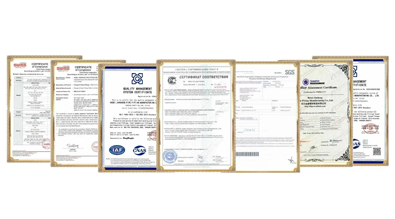
Welcome to RAYOUNG – Strong Pipes, Stronger Promise
